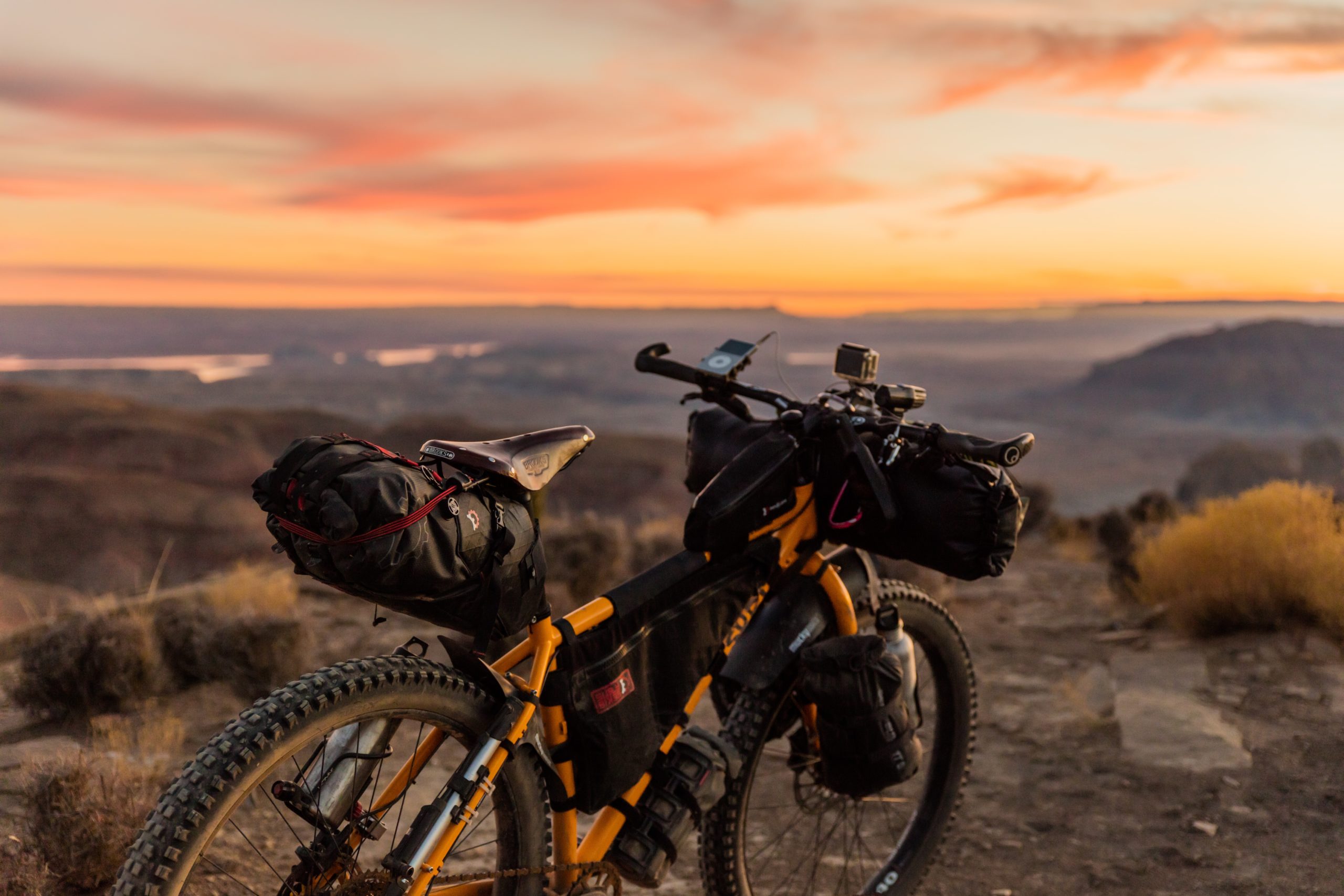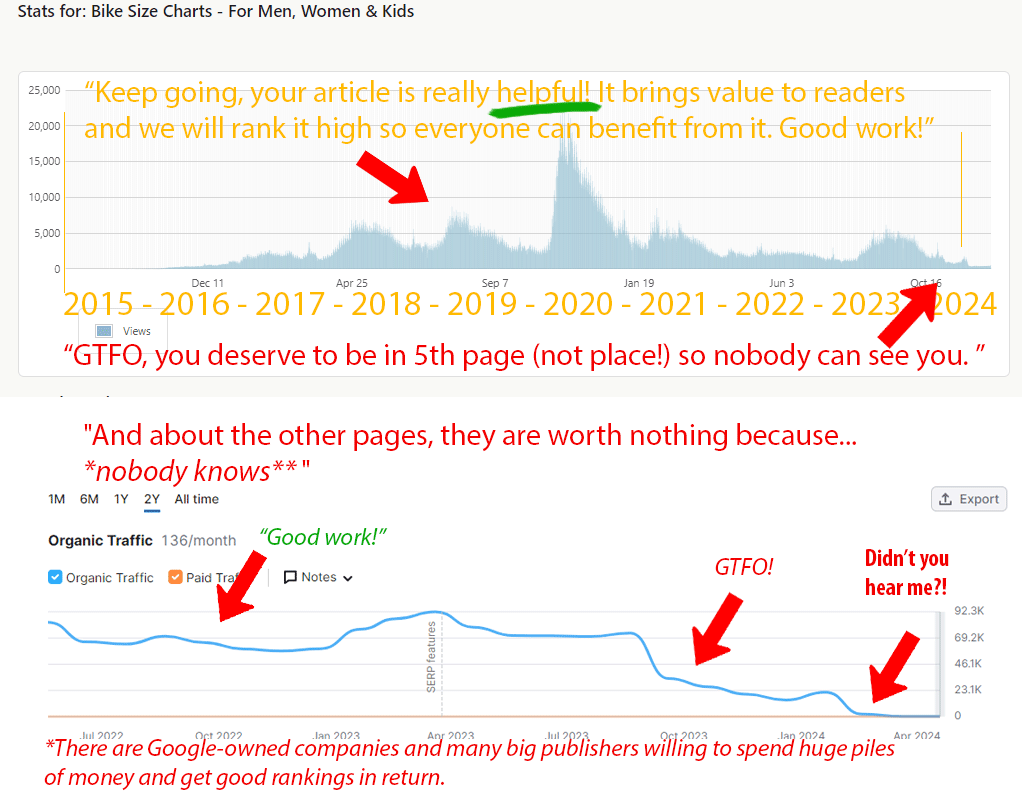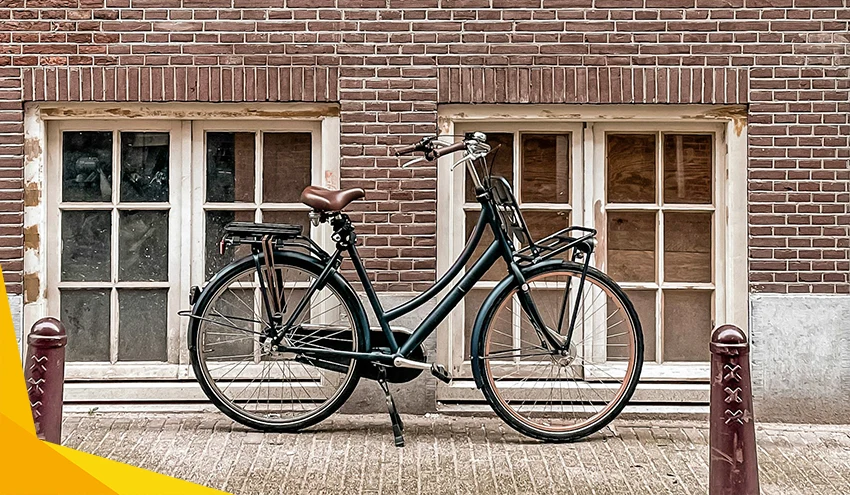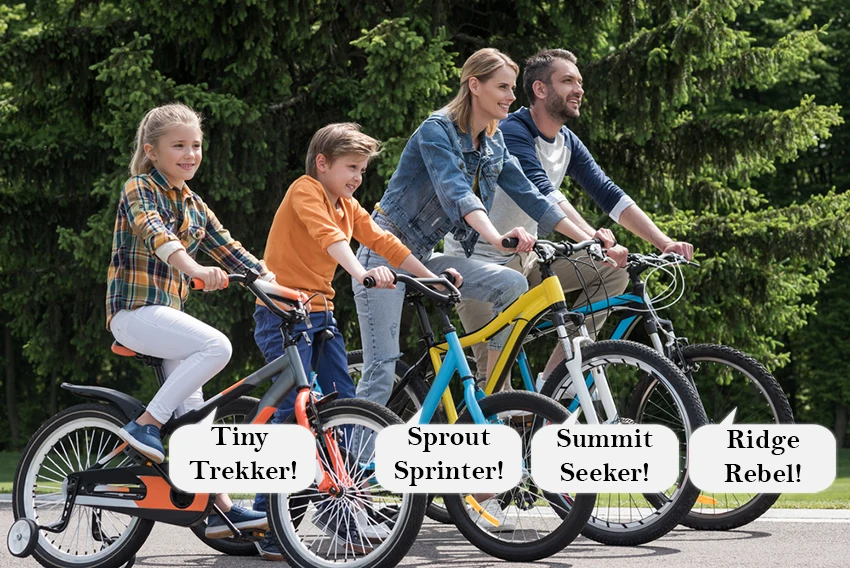I love numbers and enjoy putting things into perspective. So let’s only rely on numbers. Instead of giving simple answers, I’d like to help you change your mindset. Are you ready? Let’s go!
We hear too often that bikes are expensive.
They are not!
Or perhaps that’s relative.
P.S. In this article, I’ll show you how you can get a bike for free. (Not clickbait!)
Let me ask you, how much do you pay for your car lease?
The average American pays $773.50 a month. That’s a lot.
Let’s now compare that to the price of a bicycle.
Most people complain that $3,000 for a bike is too much. Well, let’s see.
If you divide this price by the average lifespan of a bicycle (which is at least four years), you will then get the monthly costs.
$3,000 (bike’s price) / 48 (months)
= $62.5
That’s more than 10 times lower than what the average American pays for a car! Wow.
Why I Divide The Bike Price By The Bike’s Lifespan In Months?
Most Americans get paid weekly or biweekly. We live from week to week and from month to month.
However, when it comes to bicycles, most people only see the MSRP. Psychologically, if you rank bikes online by price, you’ll come to think that cheaper bikes have a fairer price and that the others are too expensive.
I think that’s a logical fallacy.
So, let’s put things into the right perspective—weeks and months.
We Can Improve This Calculation Further.
Let’s assume you sell your bike later on for $1250 (which is quite a fair price).
$3,000 (original price) – $1,250 (resale value) = $1,750 (Total cost after four years).
Now let’s calculate the monthly cost.
$1,750 (Bike net price) / 48 (months) = whopping $36.45.
See what I’m saying? The $3,000 bike will actually cost you less than $40 per month.
Let’s Compare This Number
- Smokers in New York City shell out around $12.85 per pack, which amounts to $390 per month, $4,690.25 per year. (Source)
- The average American spends around $600 a year on alcohol, varying from $291 in Atlanta to $1,131 in San Francisco. (Source)
- The average annual cost of housing is $20,091. (Source)
Contents
But…How Much Should You Pay?
Let’s assume that you find electric bikes interesting and want to step into this world. As always, the budget is limited.
You have five bikes in your mind:
A) Used bike from Craigslist ~$300
B) Bike that you can get at a grocery store. Price $700
C) Bike your brain wants to buy — It is a decent-looking, mid-range bike with a good balance between the price and the components. Price $1,400
D) Bike that you consider to be the best one you should buy — Higher-end components and better build. Price $3,000
E) Bike that you promise to buy if you win the lottery — The top model on the market with a price tag of a whopping $7,500
| Bike A | Bike B | Bike C | Bike D | Bike E | |
| Used | Grocery store | Below market | Market price |
Top-tier model
|
|
| Useful lifetime (years) | 2 | 2 | 4 | 4 | 4 |
| Price | $300 | $700 | $1,400 | $3,000 | $7,500 |
| Resale value | $75 | $100 | $400 | $1,000 | $2,500 |
| Net price | $225 | $600 | $1,000 | $2,000 | $5,000 |
| Price per month | $9 | $25 | $21 | $42 | $104 |
| Price per week | $2.2 | $5.8 | $4.8 | $9.6 | $24.0 |
*We tried to devise a realistic scenario, but these numbers are still for illustrative purposes only.
What Can We See?
Bike A (used bike) and Bike B (cheap option) have a useful lifetime of two years. After that, you typically have to make a bigger investment to change the derailleurs, cranks, wheels, and battery plus motor.
In this scenario, (without factoring in the repair costs) the monthly expenses would be $9 and $25 per month, or $2.2 and $5.8 per week, respectively.
Bikes C, D, and E are high-quality models. Their prices are higher and so is their resale value. Decent manufacturers like woom, Cannondale, Yeti, Ibis, Santa Cruz, etc., keep a high resale value if taken good care of.
If we compare the Bike C with the cheaper Bike B (both were new), then we see that the cheaper model was more expensive. We didn’t calculate the repair costs but these are included in the lower resale value.
Even the top-tier models with prices of $3,000 and $7,500 have monthly expenses of around $40 and $100, respectively. The weekly costs are less than $10 and $25.
Conclusion: The top-tier bike costs just 13.5% the cost of an average car! A bike with great components – just 5.4%!
Let me show you how to get the top model for free.
Learn now: How To Afford a Bike (For Free)
Let’s assume that you want a bike that costs $3,000. As you saw above, the monthly cost throughout its lifespan is around $42.
Let’s see where you can find those $42 every month (or $10 a week).
There are some simple actionable things you can do to achieve that:
- Lower your car-related expenses. If your current car expenses are $450, then cut them down to $400, and you can afford to have a $3,000 bike as well!
- Quit smoking — We all have some bad habits, but if you want to stop smoking, here’s a motivation for you:
- Smoke less, drink less = get a free bike.
- If you like to drink beer (Who doesn’t?), then perhaps you could cut down the amount and save some money for a bike?
- Lower other unnecessary costs, such as takeouts, Starbucks, clothes, etc.
Yeah, 2, 3 & 4 are easier said than done, for sure. But 1 & 5 are actionable right now, without sacrificing too much.
There’s a lot of motivation to be found here.
“But… Bikes Are Expensive.”
I don’t want to sound ignorant, but I think this sentence should be reversed.
“Bikes are cheap.”
Let me explain.
Too many bikes are too cheap. They don’t even deserve to be called a “bike” because they don’t have good enough components to be reliable for years.
Which is more expensive — a $200 or a $500 bike?
Which is cheaper?
Components cost money, so $200 can’t get you good specifications. The perfect money to value ratio leans more towards $500 than $200.

How Much Should I Pay For a Kids’ Bike?
That’s the one thing that concerns me the most.
I see that too many parents want to cut corners when choosing a bike for their kid.
I don’t know why, because it is pretty easy to choose a kids’ bike. Basically, all you need to know is their age and off you go. Try to do the math for kids’ bikes that cost $100, $300, or $500 and you’ll be surprised how tiny the difference is.
By paying more upfront, you’ll get a bike that is light, has good geometry, and is very reliable.
What Do You Get By Paying More?
Spending more initially doesn’t mean you’re wasting money. It actually means you’re getting more value and paying less down the line. Here’s how:
- Frame – Low-priced bikes typically have heavy steel or basic aluminum frames. High-priced models often have better aluminum frames or light and stiff carbon frames.
- Wheels – Higher-quality wheels are more durable and require less frequent truing. They are also lighter than cheaper variants.
- Derailleurs – Better derailleurs provide smoother and more precise shifting. They last longer and you’ll have to adjust them less frequently.
- Brakes – Getting better brakes means that you will have higher stopping power, a predictable braking curve, and improved safety. More money will get you hydraulic instead of mechanical discs, which are lightyears ahead in braking performance.
- Accessories – Spending more to get accessories (fenders, racks, lights, kickstand, etc.) with the bike is a lot cheaper than buying individual accessories later on.
- Weight – The more you pay, the lighter your bike will be. The lighter your bike is, the more efficiently you will pedal, especially uphill.
Not So Black and White
As you can see, things are not completely black and white. Oftentimes, things that appear cheap end up being more expensive, and vice versa. That’s the case in the cycling industry as well.
When deciding how much money to spend on your next bike, you should look at the bigger picture.
Include the calculations we talked about above and you’ll see that your perspective will change (rightfully so!).
We spend huge amounts of money on unnecessary things every week, month, and year, without blinking an eye. If you divert those expenses towards your cycling budget, you can have the bike you’ve always dreamt of in no time.
Where’s the Golden Line?
By golden line, we mean the perfect balance between components and price. It is quite hard to find it, but here are our thoughts:
- Check out well-known manufacturers and compare their components and prices. They offer great quality.
- Get to know the full hierarchy of components.
- Read our reviews (we did the hard work instead of you).
Final Thoughts
Don’t cheap out!
Seriously, it’s not worth it. Decent bikes are still quite reasonably priced compared to cars. If you decide to be frugal now and buy a cheaply made bike, you’ll only be spending more in the future.
Getting the most value and spending the least doesn’t always mean paying the lowest price.
So keep our calculations and examples in mind when you’re in the market for a new bike the next time to be able to make smarter choices.
NB! You can carry this mindset over to other areas in your life too.






Thanks for sharing. I read many of your blog posts, cool, your blog is very good.
Great post!
I have a question that I’ve love your input.
I’m debating between a used 2010 Kona sutra in immaculate condition, travelled less than 100kms, as new really ($1300), and a brand new 2022 trek 520 ($1900).
The Kona is over ten years old, but presents as new. It feels well built, and looks beautiful.
Should I consider buying second hand, or spend that little extra and buy new and benefit from treks lifetime frame warranty?
Hi Gabriel,
Each bike brand has its strengths and weaknesses. If you value comfort and speed then Trek is much suited for that. Kona is geared towards a casual rider but in general, Kona is not a bike for speedster and climbers. They do have better wheel allowance so you have wide option in that area. But yeah, if you are more of a competitive rider, then Trek is your bike.